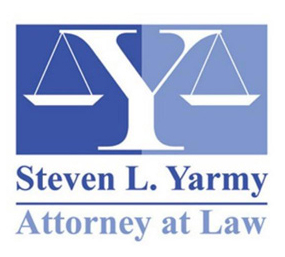THERE ARE VARIOUS CHAPTERS OF BANKRUPTCY AN ENTITY OR INDIVIDUAL CAN FILE.
THESE INCLUDE A CHAPTER 7 FOR LIQUIDATION AND CHAPTER 13 AND 11 TO REORGANIZE.
THE FOLLOWING IS AN EXPLANATION AND PURPOSE FOR CHAPTER 7, 13, AND 11 BANKRUPTCIES:
For any of the below bankruptcy services you will receive a personal commitment from this office to
assist you the whole way through. This firm is very hands on. You will spend time with the attorney as
well as paralegals. We will do all the work, and you will just give us the information. YOU WILL FEEL LIKE
YOU RECEIVED PERSONAL CARE.
CHAPTER 7
The purpose of Chapter 7 bankruptcy is to give the debtor a fresh start by discharging unsecured
debt. Unsecured debt includes credit cards, medical bills, and the like. The unsecured creditors are only
entitled to payment from assets that are non-exempt. The Debtor(s) keep exempt assets like
homestead, vehicles, and pensions. Each Debtor also receives a $10,000.00 catchall provision that they
can apply to keep non-exempt assets. MOST DEBTORS GET A DISCHARGE WITHOUT PAYING CREDITORS.
Qualifications are based on income, which depends on family size: An individual can file if he/she makes
less than about $53,000.00. The amount increases as the family size increases.
From filing it takes 120 days for a discharge.
Chapter 7 is ideal for debtors who want to get ride of burdensome debt. In most cases without paying
creditors anything. Ideal if you have a home and/or vehicle(s) you want to keep and are current. Also,
current on any HOA.
If you have a home that has arrears, you will not want to file a chapter 7 because if you are behind on
secured debts like real property and vehicles and file for chapter 7, it is very likely the creditor will file a
motion to lift the stay and then foreclose or repossess the property. In this case, if you still want to file
bankruptcy you could still file a chapter 13.
CHAPTER 13
The purpose of chapter 13 is to reorganize your debt and keep certain assets like real property and
vehicles. Person(s) that qualify for chapter 7 can still file a chapter 13 to protect homes and vehicles that
are in arrears. The is a loan modification portal within the bankruptcy case where a loan modification
can be requested and approved with the Court. This is a faster process than a loan modification out side
the bankruptcy context. In my experience, the loan modifications through the chapter 13 portal is very
successful.
Debtors who do not want to qualify for a chapter 7, and still want to file a bankruptcy, can file a chapter
13.
The chapter 13 in addition to filing the normal bankruptcy schedules requires the debtor to file a plan
with the bankruptcy petition. The plan will propose what payment the debtor will make every month to
the chapter 13 trustee. The payment is held by trustee and not disbursed until the plan is confirmed. It
can take more than a year to confirm a plan. Debtors who otherwise qualify for a chapter 7 can propose
a plan for 3 years (less if pay all creditors and parties paid 100% before 3 years). However, Debtors who
do not qualify for a chapter 7 and still want to file bankruptcy, would have to file a chapter 13 (or 11 as
explained below) and make the monthly plan payments for 5 years.
The plan payments are essentially determined by your disposable income. (Income -expenses)
For example, if you grossed $5,000.00 per month, you would take out all taxes and expenses (electricity,
phone, rent, mortgage, entertainment, ect) to determine disposable income. If all these deductions
equal $4,500.00 you would pay the Trustee $500.00 per month for 3 to 5 years.
To confirm a chapter 13 plan, the monthly payments must pay all administrative expenses (Trustee Fees
(10%) and attorney fees) and all priority debt which includes, child support/alimony arrears, mortgage
arrears, tax arrears. If all the administrative and priority debts are satisfied, then the plan can be
confirmed. Any amounts left over from the monthly payments after administrative and priority expenses
are satisfied is paid to the unsecured creditors pro rata. If no other amounts left over and administrative
and priority are satisfied, then the plan can confirm, and the unsecured creditors would receive nothing
unless there is liquidation value. Liquidation value is amount a creditor would receive had the Debtor
filed a chapter 7 bankruptcy. Often, there is no liquidation value because the creditors typically receive
nothing.
Discharges under chapter 13 are not received until all payments required under the plan are made.
Plans can be modified if your situation changes.
You have to turnover all tax returns during the chapter 13 including any refunds.
You have to take the Credit Counseling Class (before filing and within 6 months) and Debtor’s Certificate
of Education (post filing)
CHAPTER 11 CRAMDOWNS (MAY BECOME KNOWN AS CHAPTER 5)
During the mortgage crises I filed chapter 11 for Debtor’s whose real property were upside down., which
means the mortgage is more than the fair market value. During the crash, the values went from for
example $400,000.00 to $200,000.00.
Chapter 11 allows you or your entity to cram down the mortgage to current values and base the new
loan on these values. This really helped homeowners. Today, all their equity is back. The creditors have
no claim to the equity.
Filing chapter 11 is more complicated than just explaining the aspects here. The thing to know is
whether you need this to begin with. Any consultation will include chapter 11 advise if needed.
